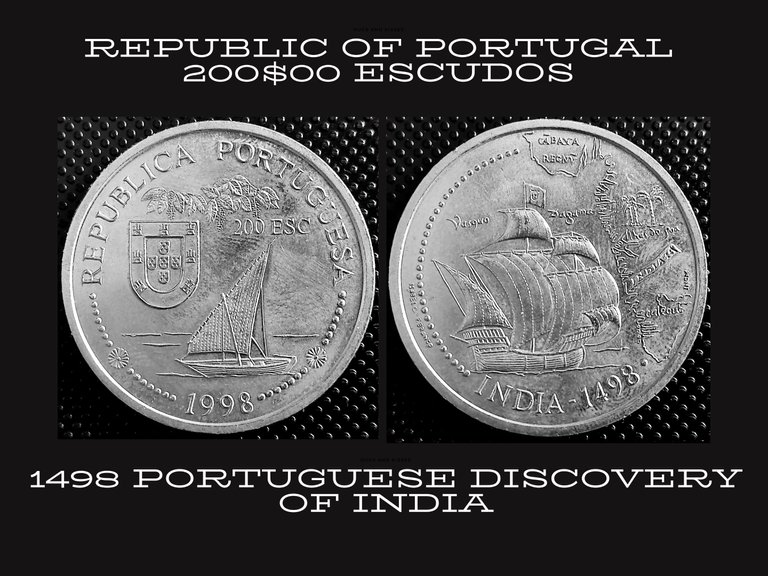
The 200 Escudos coin minted in 1998 commemorates the 1498 Portuguese Discovery of India, a monumental event in the history of maritime exploration and trade.
At the center an allegory composed of, on the left the national coat of arms and above it, leafy branches of a pepper tree with fruits, below a small single-masted boat with a hoisted sail sailing on calm waters, next to the coat of arms and below the pepper tree the face value "200 escudos" at the top rim the legend "Republica Portuguesa" at the bottom rim between the year and the top legend an ornamentation with a rosette flanked by pearly outlines, on the edge a smooth circle.
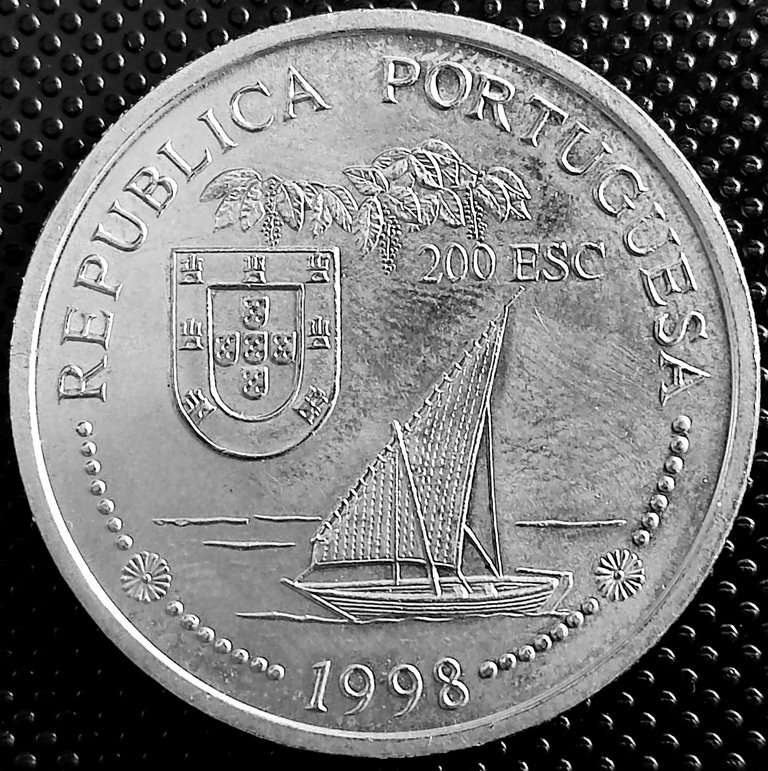
An allegory composed of, prominently featuring Vasco da Gama ship with all sails hoisted and sailing towards india partially represented on the right by a map inspired by a chart by lopo homem reinel from 1519, featuring a band with the inscription "India" and territories identified in latin at the top near the rim "cãbaya regnv", further down above the band three palm trees and the legend "ilhas de poa", further down in the direction of the ship "calecut" above, flanking the central mast of the ship the name "Vasco da Gama" at the bottom the legend followed by the date separated by a dash "India 1498" on the left rim a pearly semicircle, flanked on the left edge by the signatures of the authors.
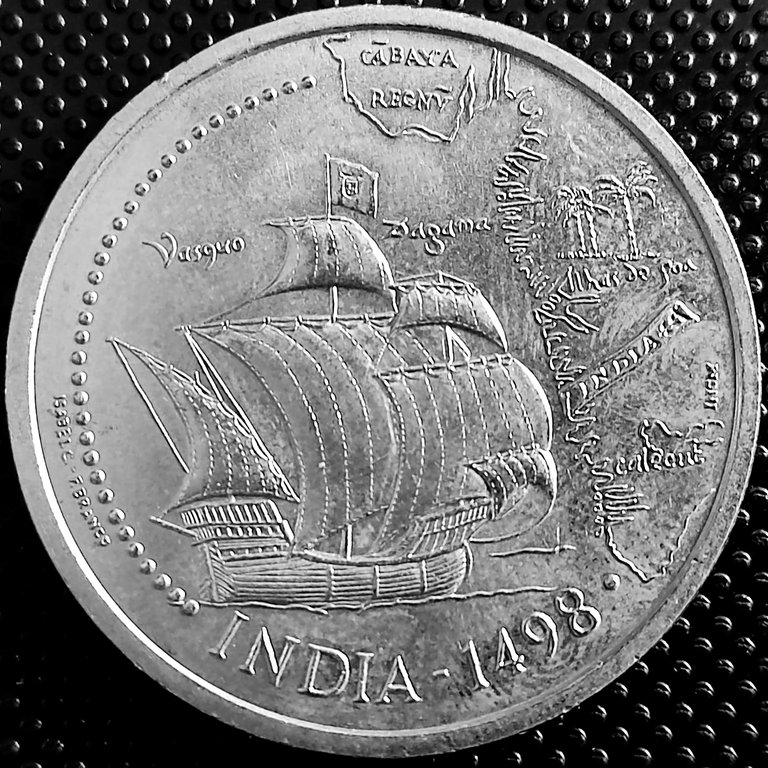
| SPECIFICATIONS | |
|---|---|
| PERIOD | Portuguese Republic (1986 - 2001) |
| YEAR | 1997 |
| COMPOSITION | Copper-Nickel |
| EDGE | Reeded |
| WEIGHT(g) | 21.1 |
| DIAMETER | 36mm |
| THICKNESS(mm) | 2.8 |
The 200 Escudos coin commemorating the Portuguese Discovery of India serves as a tangible reminder of Portugal illustrious maritime history and its role in shaping the course of global exploration and trade.
History
In the years of exploration, few achievements rival the monumental voyage of Vasco da Gama, who in 1498, led the first Portuguese expedition to reach India by sea. This historic feat not only reshaped the course of global trade but also marked a pivotal moment in world history, cementing Portugal's position as a maritime superpower.
Commissioned by King Manuel I of Portugal, da Gama set sail from Lisbon in July 1497, aboard his flagship, the São Gabriel, accompanied by three other vessels. Navigating the uncharted waters of the Atlantic and braving the perilous currents around the southern tip of Africa, da Gama's expedition faced numerous challenges, including storms, disease, and dwindling supplies.
After months of arduous navigation, on May 20, 1498, da Gama and his crew finally sighted the shores of India near the port of Calicut. Their arrival marked the culmination of years of planning, preparation, and sheer determination Vasco da Gama success in reaching India by sea not only proved the viability of a direct maritime route to the lucrative markets of the East but also dealt a significant blow to the Venetian dominated spice trade, which relied heavily on overland routes controlled by Muslim middlemen.
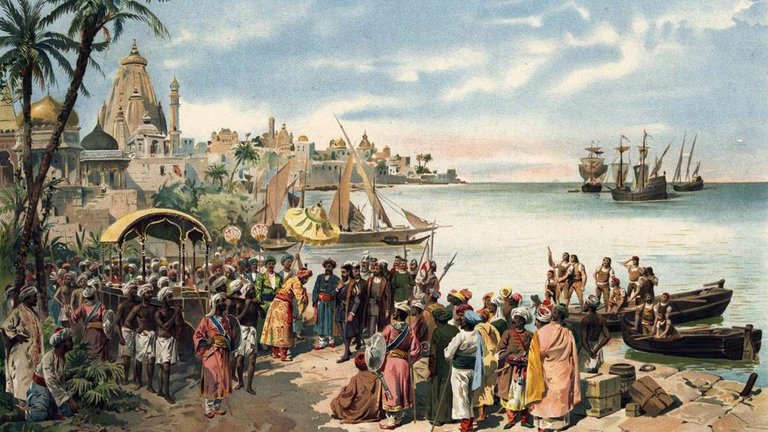
SOURCE
Upon his arrival in Calicut, Vasco da Gama was met with a mixture of curiosity and suspicion by the local rulers and merchants. Despite initial tensions, he succeeded in establishing diplomatic relations and securing a lucrative trade agreement, acquiring valuable spices such as pepper, cinnamon, and ginger to bring back to Portugal.
News of Vasco da Gama voyage spread quickly throughout Europe, sparking widespread interest and admiration for Portugal maritime achievements. The successful establishment of a direct sea route to India not only enriched Portugal's coffers but also laid the foundation for centuries of Portuguese dominance in the Indian Ocean trade.
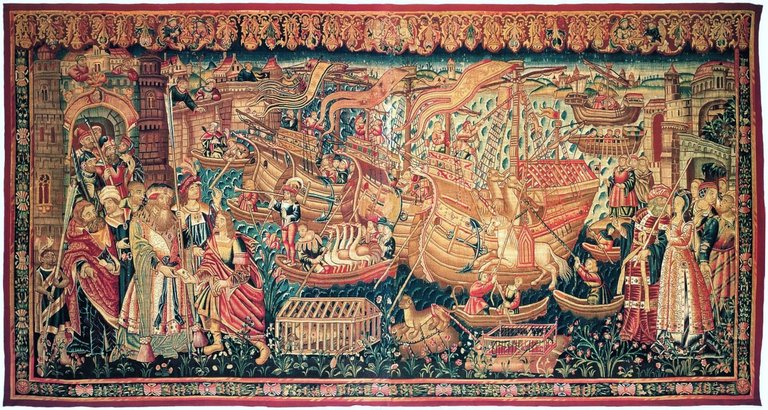
SOURCE
However, the Portuguese presence in India also had far-reaching consequences, including cultural exchange, conflict, and colonialism. Portuguese forts and trading posts dotted the coastline, and their influence extended far inland as they sought to monopolize trade and spread Christianity.
The 1498 Portuguese discovery of India stands as a testament to human ingenuity, courage, and the insatiable quest for knowledge and wealth. It opened up new horizons for exploration and trade, forever altering the course of history and leaving an indelible mark on the world as we know it today.
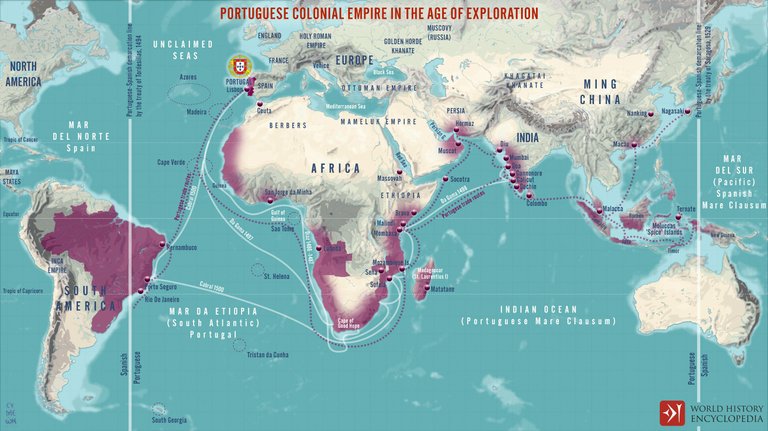
SOURCE
In this post all photos and text are authored by @portugalcoin!
➡️ Twitter
➡️ Brave Internet Browser
Images © 2024 @portugalcoin | All Rights Reserved

Welcome to my blog on Hive! Here, you'll discover various trips I've taken in Portugal, along with information about the main monuments, squares, streets, palaces, and more.
I'm also an avid collector of Portuguese coins, so feel free to exchange thoughts or information about numismatics with me. 🇵🇹🙏!
[Hive original]

